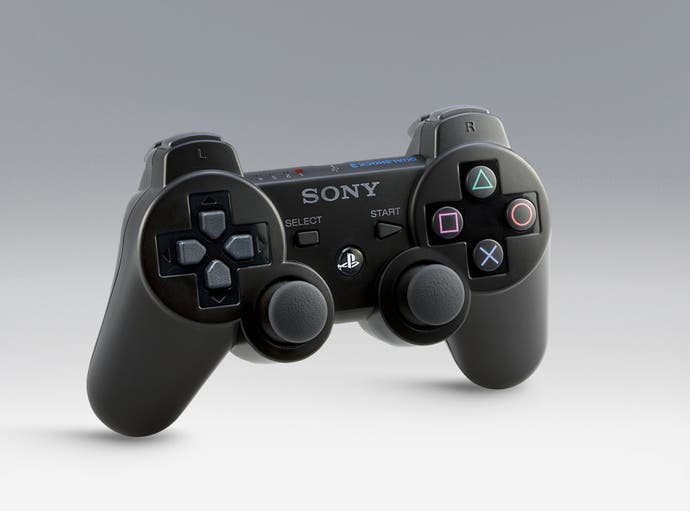DualShock 3
It's out here today, but is it worth 40 quid?
Speaking from experience, there's a lot you can do in nine months. You can make a baby, catch up on every single episode of 24, Sopranos, West Wing and Alias, and grow a mighty beard. Or you can make rude origami hats. Or, if your name's Sony, you can release the DualShock 3 in Japan and then make everyone in Europe wait for it. But like Jack Bauer during his year-long Chinese torture episode, or Sydney Bristow buried alive, we're simply not going to break. We've had decades of experience waiting for everything, which is probably why your correspondent loves Glastonbury so much: it offers endless queuing opportunities.
And this week, dear, hard-pressed, undervalued European gamer, you too can relive the spirit of Glastonbury by indulging in self-defeating queuing, mind-bogglingly inflated prices and questionable personal hygiene, as Sony's long-awaited DualShock 3 joypad finally goes on sale across Europe. This incredible event brings one of the most baffling delays in gaming history to an end, finally introducing the incredible concept of rumble to PlayStation 3 gaming, fully 15 months after the console's introduction to PAL territories.
Available for the princely sum of GBP 39.99, gamers have expressed everything from mild consternation to undignified rage over the price-tag of a controller which is, lest we forget, available on import (and Amazon sellers) for five or ten quid cheaper - including shipping. But, bleh, the whole rip-off Britain/Ireland/Europe debate is a short-circuit to doom and one we're certainly not going to solve by hanging around here cluttering up the word count. What's important is to guide you on what the controller's like to use, as well as any pertinent information on the many things that have and haven't been fixed since the release of the Sixaxis.

The first thing you'll notice about the DualShock 3 controller is the fact it looks exactly like the Sixaxis in every conceivable way - with the exception being the presence of a DualShock 3 logo, shunting the original Sixaxis logo down half an inch so that it sits to the left of the USB connector port. Chin-stroking execs who earn more money than God probably sat around boardroom tables for an entire month deciding that. I digress.
Prised from its ludicrously secure plastic packaging by murderous scissors, the next discovery is that the DualShock 3 is considerably heavier than its cloudy sibling, meaning, if anything, it's now more effective as a blunt instrument. Don't fling it at the telly. While not quite as bulky as the generally loveable Xbox 360 wireless pad, its weight is now almost identical, giving it a more solid initial presence when you first pick it up.
In terms of its other physical features, Sony has once again passed up the opportunity to tweak the decade-old design introduced with the original DualShock back in 1997. That means that, yes, the rubber grib mouldings on the dual analogue sticks are back. While this is never an issue when the pads are shiny and new, any long-term PS2 owner will tell you that they have a tendency to work themselves loose after a while, either spinning around the plastic underneath them, or coming off completely. I find it odd in the extreme that Sony still hasn't found a more robust, longer-lasting solution.
In addition, those of you longing for a newly-refined approach to the d-pad, or unhappy with the Sixaxis' new analogue L2 and R2 triggers, will be out of luck. Sony's approach to joypads appears to be to evolve them as little as possible to cause the minimum amount of fuss from the user base (how ironic). One suspects that removing vibration in the first place had little to do with practicality and more to do with the ongoing Immersion case that was literally rumbling on at the time, but that's another story.

